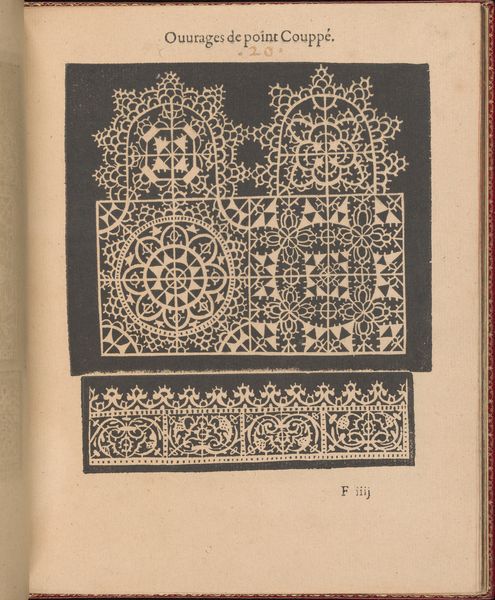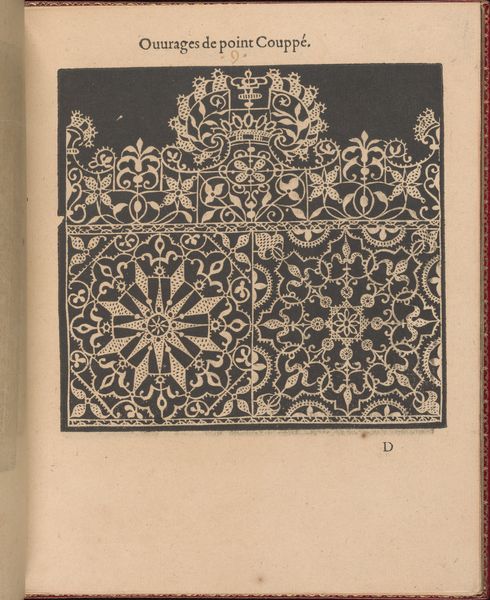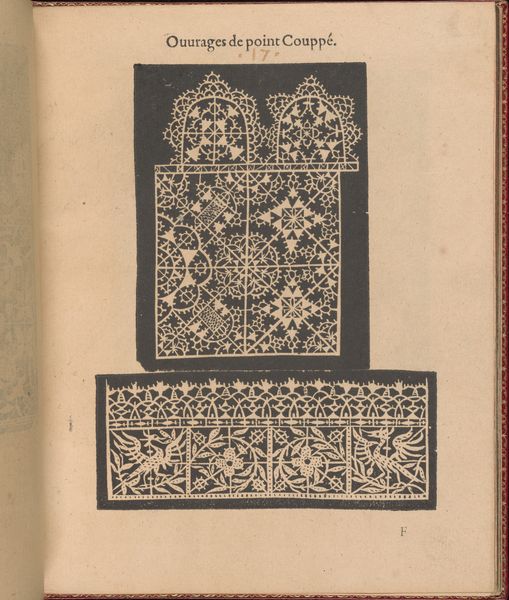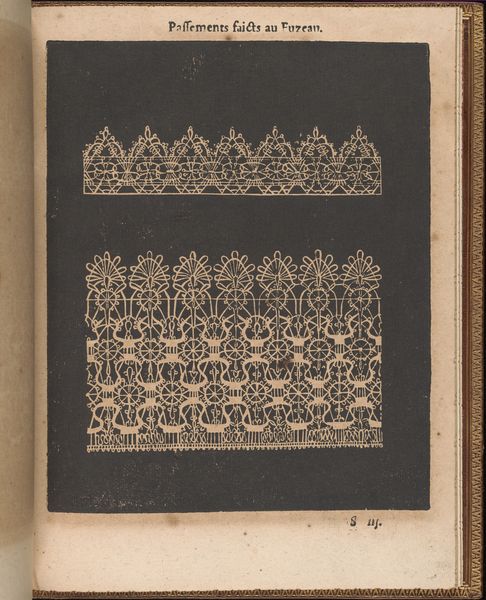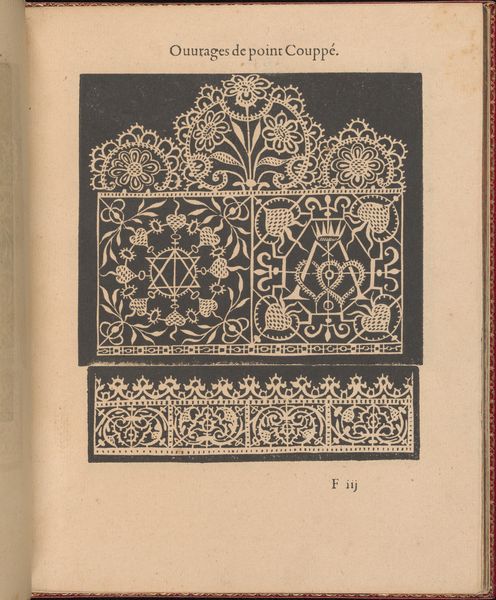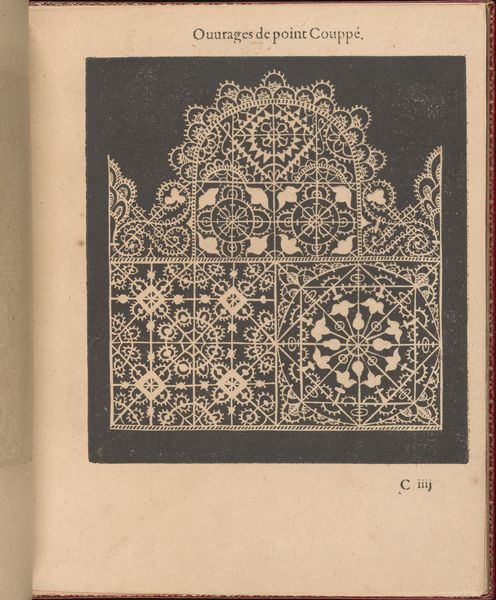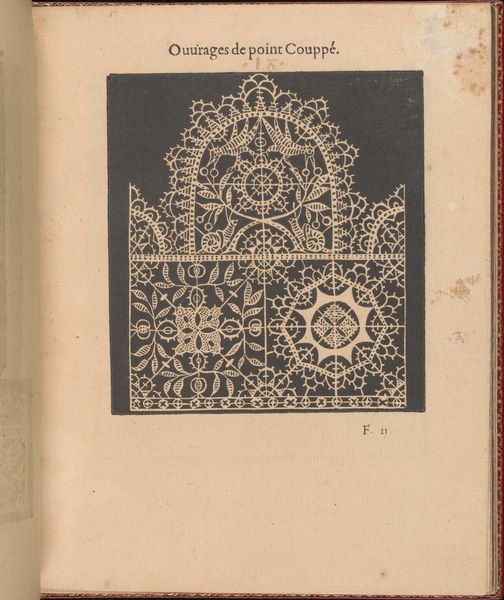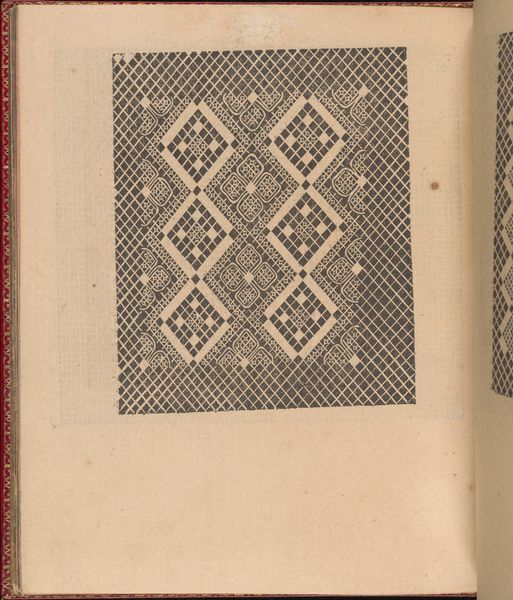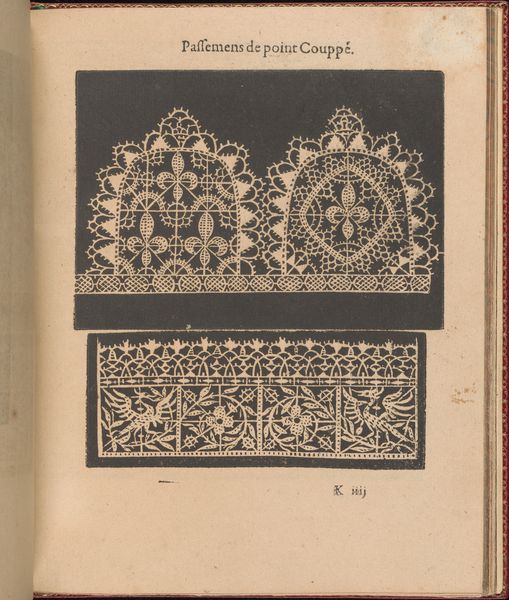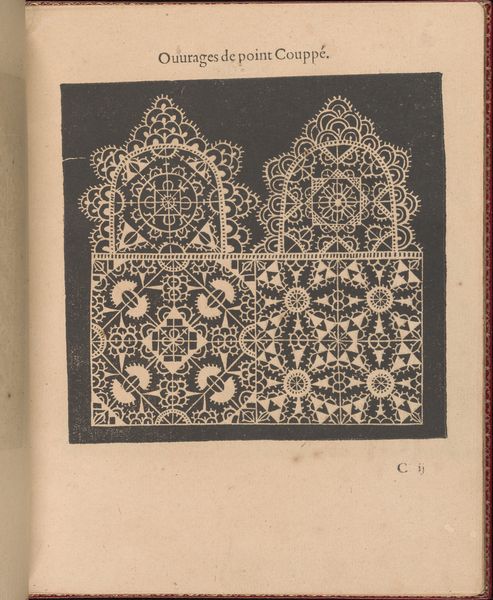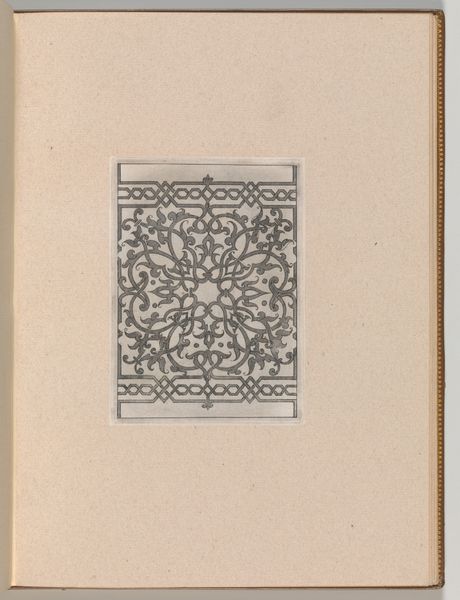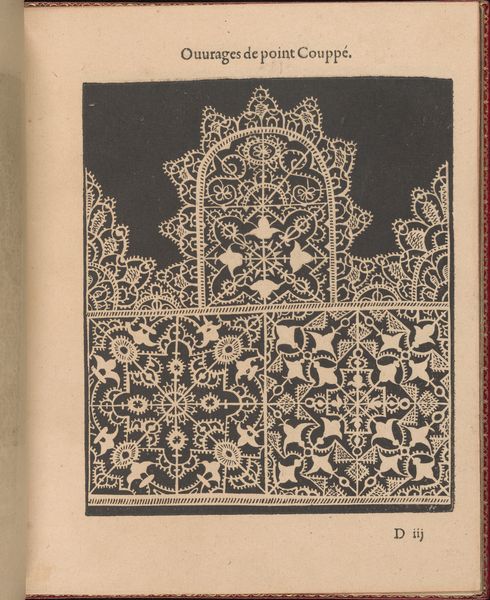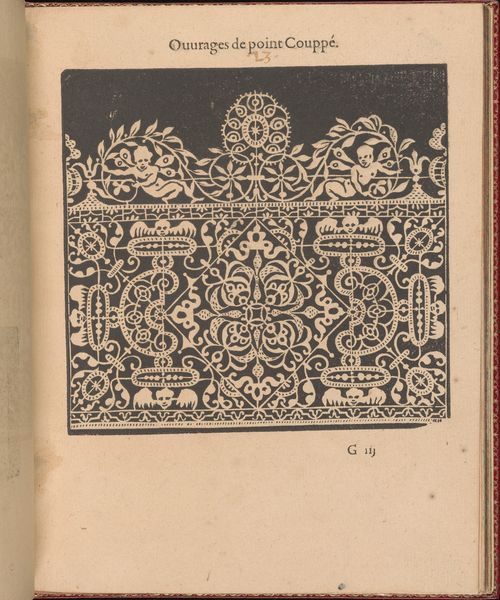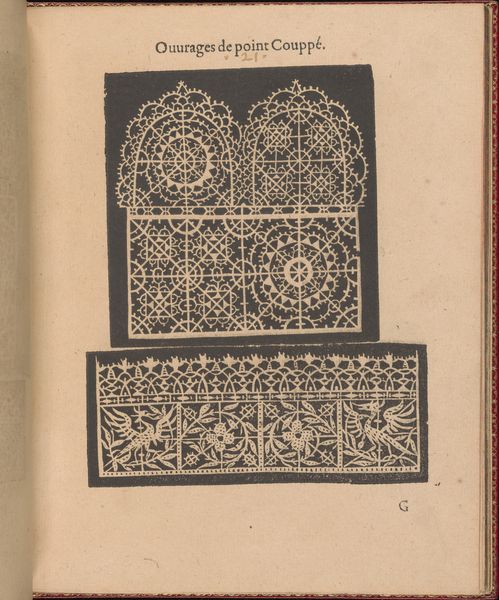
Les Singuliers et Nouveaux Portraicts... page 9 (recto) 1588
0:00
0:00
drawing, print, intaglio, engraving
#
drawing
# print
#
book
#
intaglio
#
11_renaissance
#
geometric
#
line
#
decorative-art
#
italian-renaissance
#
engraving
Dimensions: Overall: 8 1/16 x 6 5/16 in. (20.5 x 16 cm)
Copyright: Public Domain
Editor: So, here we have a page from Federico de Vinciolo's "Les Singuliers et Nouveaux Portraicts..." dated 1588. It’s an engraving, a print from a book, depicting geometric lace patterns. I find the level of detail astonishing, especially considering when it was made. What strikes you when you look at this piece? Curator: It's interesting to consider this image not just as a depiction of lace, but as a reflection of 16th-century social structures. These pattern books were luxury items, weren’t they? They dictated fashion and reinforced class distinctions. Lace itself was incredibly expensive. What do you think the presence of this in book format says about who it was for? Editor: Definitely not the lacemakers themselves, I imagine. Maybe wealthy women who would then direct their servants? Or perhaps even as aspirational material for the emerging middle class? Curator: Precisely. And it’s worth noting the politics inherent in the very act of publishing and disseminating these patterns. Who controlled that knowledge, and who was excluded? This print, by making lace patterns more widely available, perhaps started to disrupt older hierarchies. Is this “democratization” always beneficial? Editor: I hadn’t thought about it that way. I was focused on the artistry, but I see your point. There’s a power dynamic embedded in something that seems so ornamental. Could you tell me a bit more about why controlling these patterns matters? Curator: Well, think about the guilds and the apprenticeship system. Skills, design and construction would be passed down as exclusive rights of association, protecting the value, perceived quality and scarcity of goods that may now seem common or quaint to us. This imagery represents disruption. I now wonder about copyright, then and now! Editor: That's fascinating. I'll definitely be looking at these kinds of images with a different perspective now, thinking about not just the “what” but also the “who” and the “why”. Curator: Exactly! It’s crucial to see how art, even seemingly decorative art, is always intertwined with social and political currents. Thank you for making me think more broadly, too.
Comments
No comments
Be the first to comment and join the conversation on the ultimate creative platform.
